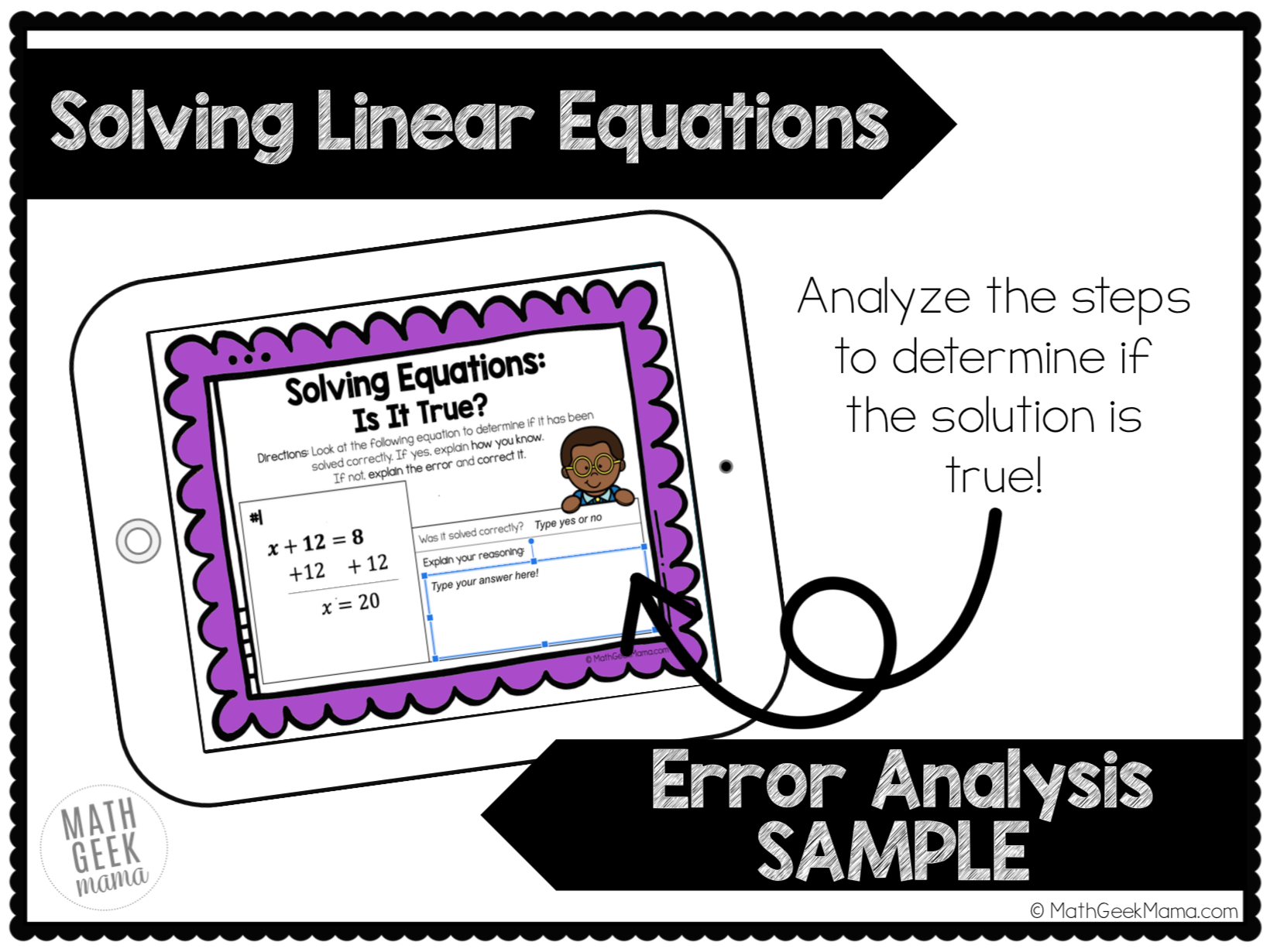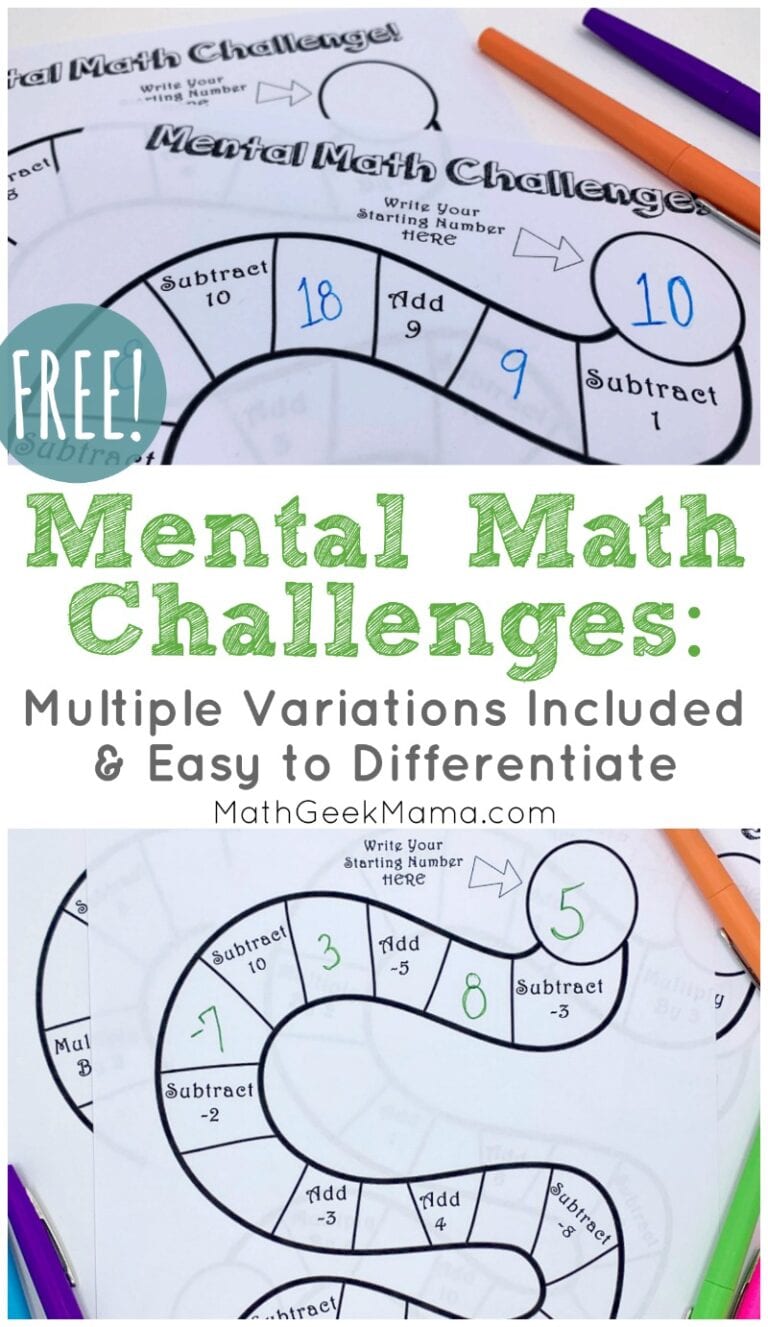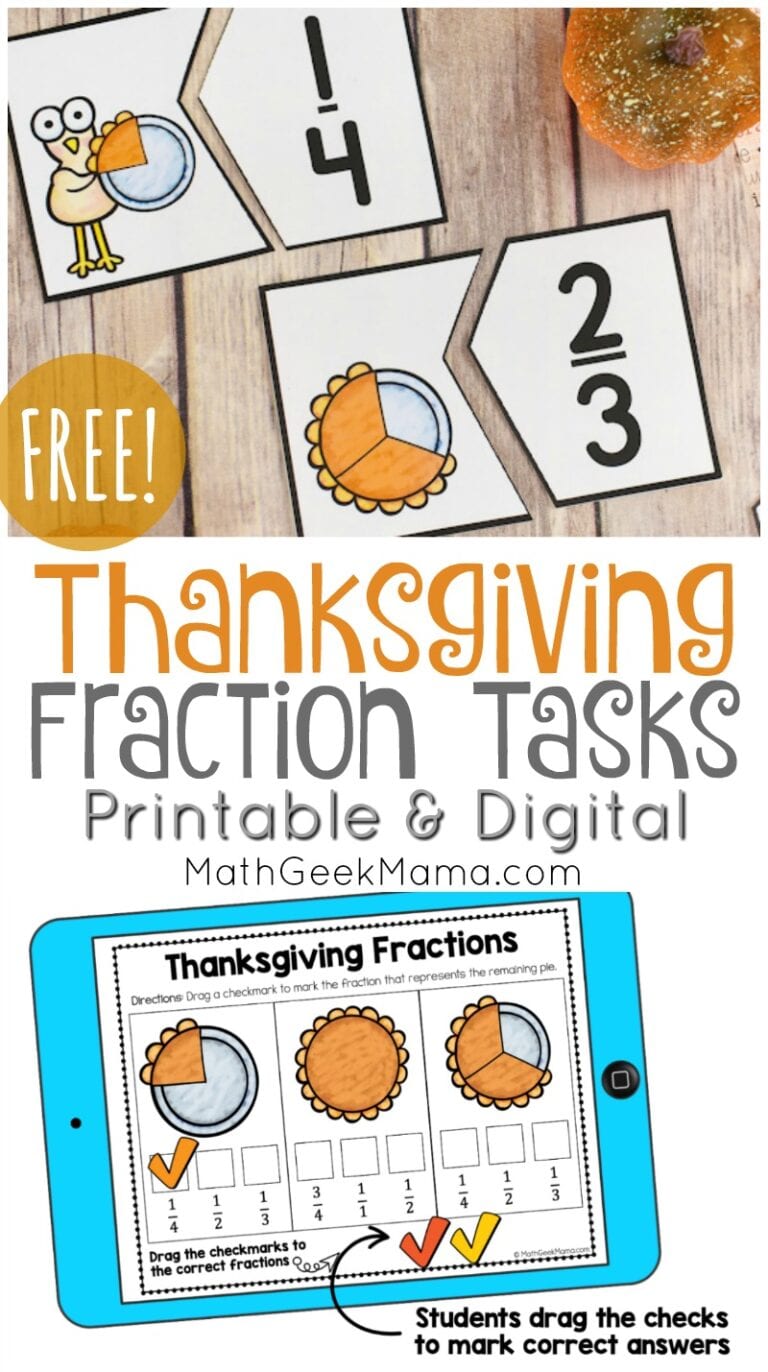DIGITAL Solving Linear Equations Error Analysis {FREE}
Want to deepen your students understanding of linear equations? Grab this free digital sample of solving linear equations error analysis tasks to highlight common mistakes and learn from them.
One of my favorite strategies for engaging students and really pushing them to think about a concept is with an error analysis task. Sometimes this might mean analyzing and correcting their own errors so they can learn from them and look for ways to reduce errors in the future. But sometimes it’s easier (and more inviting) to present a problem for all students to analyze and consider together. Then they can think about what methods were used to solve and what mistakes were made along the way. This then leads to rich discussion and deeper understanding. Plus, no one feels put on the spot because the errors aren’t their own. This digital set of tasks allows you to discuss common misconceptions and errors when solving linear equations.

Solving Linear Equations Error Analysis for Google Slides:
This free sample includes interactive prompts for Google Slides. This means you can assign them to students virtually, or use them in class as a whole group discussion or in a 1-to-1 classroom.
To begin, you’ll want to click the ‘access link’ in the pdf download. This will allow you to make a copy of the slides in your personal Google Drive.
Once you have a copy, you can assign one or more slides to students in Google Classroom, you can convert the slides to use in other platforms, or you can present the tasks to your students as a whole class or in a small group setting.

No matter how you use or assign these, each slide includes interactive text boxes for you and your students to type their responses into.
Printing the Google Slides:
Although these are not designed to be printed out, you also have that option in Google Slides.
Begin by deleting each text box from each slide.
Then go to File–>Print
From there, you can adjust your settings to decide how many slides to print per page (similar to Powerpoint).
Analyzing the Mistakes in Each Equation:
This free sample includes a directions slide explaining to students what’s expected, as well as 5 linear equations to consider (one per slide).
Each equation shows a series of steps that were done to solve the linear equation. The slide then asks, “Is the solution true?”
Students have to look at the steps carefully because at first glance, it might seem like all was done correctly and the solution makes sense.
If you know there’s an error but your students don’t spot it, encourage them to test the solution rather than analyze the steps.
For example, in problem #2, the solutions says that x = 9. To test if this is true or not, students can plug in 9 in the place of x in the original equation and see if both sides are in fact equal.
Doing so will give you -12 = 24, which is obviously not a true statement.
Therefore, x cannot equal 9, and there must be an error in the work somewhere.
If they’re still stuck, encourage them to work out the problem for themselves on a scrap of paper without looking at the solved equation. This may help them to solve correctly, allowing them to spot the error on the slide.

Benefits of Error Analysis:
Students can gain so much knowledge, clarity and insight when they work on analyzing a problem that has already been solved.
It doesn’t even have to be a mistake, it could simply be a problem that is solved using a new-to-them strategy, formula or algorithm.
By considering whether or not the solution is true, students are confronted with whether or not they actually understand a concept. Many times, they feel very confident in their abilities, only to discover they still have so much more to learn.
Analyzing other problems and errors can also give you opportunities to highlight particular strategies that you want them to understand better.
This might be something that is new or that they haven’t encountered before.
Or it might be a way to highlight common errors that you see them making over and over. By bringing up a common error and discussing it as a group, you give an opportunity for students to recognize it and hopefully be more aware of their own work in the future.
Related: 8 Reasons Making Mistakes in Math is a Good Thing
Ready to get started? Click the link below to go to my shop and grab the linear equations error analysis set!

{Click HERE to go to my shop & grab the Digital Linear Equations Error Analysis Challenges!}
Find More Error Analysis Resources Below:
- Blank Error Analysis Templates & Classroom Poster Set | Perfect for test corrections at any grade level
- Order of Operations Error Analysis | DIGITAL
- Complete set of Solving Linear Equations Error Analysis Tasks | Printable + DIGITAL












One Comment
Comments are closed.